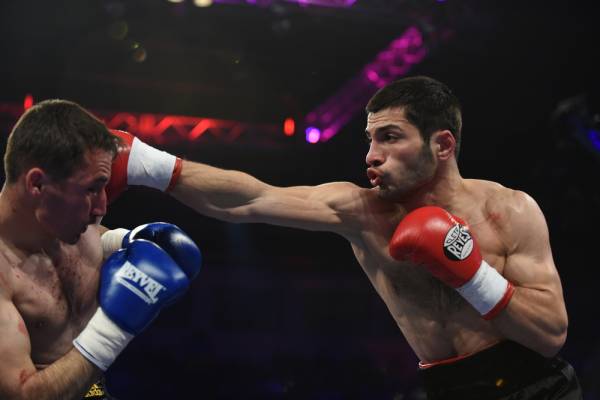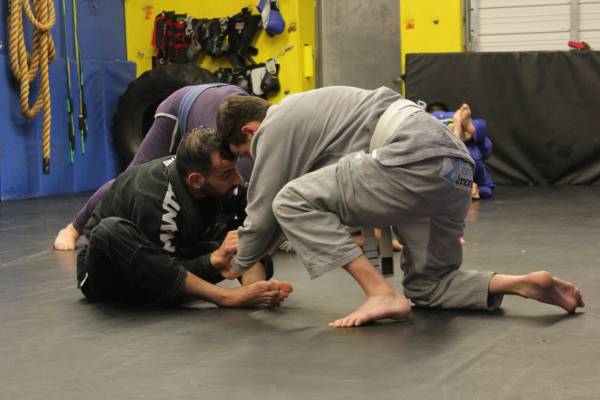“Why study a martial art?” is a question that has many answers. The benefits of the training are widely touted and the popularity of mixed martial arts has brought new insight and perspective to the arts. In my years of participating and coaching in boxing and the martial arts, I’ve heard about every reason a student might have. Some want to learn to defend themselves, while others hope to compete, and some just want a great workout.
“Why study a martial art?” is a question that has many answers. The benefits of the training are widely touted and the popularity of mixed martial arts has brought new insight and perspective to the arts. In my years of participating and coaching in boxing and the martial arts, I’ve heard about every reason a student might have. Some want to learn to defend themselves, while others hope to compete, and some just want a great workout.
All are valid and common reasons to study a martial art. These reasons also conjure up familiar images – flowery kicks, fierce punches, and nasty elbows. Such images are part of the appeal and mystique that surrounds the martial arts. Indeed, the workout is among the best out there, and learning to grapple and strike to defend yourself is definitely a valuable skill.
Yet the real reasons to study a martial art go much deeper than the punch or the kick. The journey of a martial artist is a journey of self-discovery. With that in mind, here are five underrated reasons you should learn a martial art.
1. Discipline and Self-Mastery
“The first and best victory is to conquer self.” – Plato
The root of the word discipline is disciple, as in a willing pupil, a student, or simply “to learn.” While some are born with an iron will, discipline can be learned, albeit sometimes the hard way.
“[T]he irony of self-defense is that our biggest opponent in almost any conflict is within.”
The trait of discipline is among the most important lessons I gained through the martial arts. Every grueling class, every frustrating attempt at mastering a form, and every gut-wrenching sparring session is a step toward self-discipline.
And the ultimate discipline is mastery of self. The connotation of self-defense assumes an outside force asserting its will against you. Yet the irony of self-defense is that our biggest opponent in almost any conflict is within. I have used martial arts training countless times, but not in the way you might think. I’ve never applied an arm bar in a street fight or knocked an assailer unconscious. Instead, I have used discipline to not react to anger with anger. As valuable as learning the kicks and punches is the discipline of knowing when to use them.
2. Finding Your Flow State
“Art enables us to find ourselves and lose ourselves at the same time.” – Thomas Merton
Lost in the shuffle behind the blood, sweat, and tears of fighting, grappling, and striking is the word art. It seems incomprehensible that fighting can translate to art. Yet, when I would watch the glorious circular movements of my fellow kung fu students, I saw the expression of beauty. Even boxers, with their intoxicating rhythms, express their own form of art with the grace and style of dancers.

Art is simply the application of a creative skill, and the martial arts teach you how to move your body with grace, efficiency, and power. Artist Henri Matisse said, “Creativity takes courage.” Indeed, all art takes the willingness to be present and truthful, and when we see art, we discover truths about ourselves and life. While you might not become the next Picasso by studying Taekwondo, you will definitely take steps toward discovering your authentic and creative center.
3. The Stillness of Movement
“The consciousness of self is the greatest hindrance to the proper execution of all physical action.” – Bruce Lee
Increasingly it seems difficult to unplug from the constant 24/7 bombardment of information, data, and entertainment that seeps into every facet of our daily lives. This is undeniably true where it comes to fitness and many athletic endeavors. It’s hard to find a fitness trend that doesn’t include a shiny bell or whistle in the form of an app, gizmo, or portable device. I’m sure it won’t be long before there is a technology-based martial arts class setting.
“By studying a martial art you will learn how to breathe, how to move your body with precision, and how to have the right mindset in doing so.”
In the meantime, the martial arts remain about the work. That work is the juxtaposition of the internal with the external. There are many ways to fuse the body with the mind, yoga and mediation among them. But the martial arts are unique because of the speed and the stakes.
The martial arts are a haven to unplug and unwind and find stillness in movement. The popular way to move these days seems to be distracting yourself from exercise. In contrast, the martial arts will teach you to move by being present. By studying a martial art you will learn how to breathe, how to move your body with precision, and how to have the right mindset in doing so.
4. Learning to Fight Through Adversity
“I let it go. It’s like swimming against the current. It exhausts you. After a while, whoever you are, you just have to let it go, and the river brings you home.” – Joanne Harris
If you’ve ever been in a riptide current, then you know you can be the strongest swimmer in the world, but not as strong as the current. It’s a lesson you learn again and again in the martial arts – there is always someone bigger, faster, and stronger than you. Every great fighting champion I know of has wound up on his or her back at some point.
Many martial arts, from judo to Brazilian jiu jitsu, are learned first hand in this manner – you must swim with the current. That is, use the energy brought against you and transform adversity to your advantage. Martial arts teach you both successful offense as well as successful defense, when to attack and when to retreat. These concepts are just as applicable in the ring as they are the board room. The martial arts will help you find a way to flow with the current, and though it.

5. Rolling With the Punches
“Success is how high you bounce when you hit bottom.” – George S. Patton
Martial arts will help you learn to take a hit (literally and figuratively). I recently had a conversation with a new friend who was surprised to learn I spent many years in boxing and the martial arts. “I don’t understand how anyone would intentionally take a hit to the face or head,” she said.
Given the current information related to the dangers of head trauma, it’s a hard point to argue. That said, “taking hits” is something all of us experience on some level many times in our lives. As proof, there are many clichés that speak to rolling with punches and being able to get back up when you’re knocked down.
“The martial artist also learns that one of the greatest skills is the ability to stay calm, relaxed, and present in a fight.”
I would add that taking hits is a transcending life lesson. The greatest athletes, fighters, and artists share a common trait in being wholly present amid incredible tension. Think of a graceful artist giving a courageous performance with the pressure of thousands, if not millions of spectators. Think of a surfer or skier with effortless ease amid the life and death stakes of thirty-foot waves or traveling 90mph downhill. The martial artist also learns that one of the greatest skills is the ability to stay calm, relaxed, and present in a fight.
Have you studied a martial art? Why did you do it? Why would you suggest that someone else study martial arts? Post your thoughts to the comments below.
Check out these related articles:
- The 6 Most Important Things Martial Arts Taught Me About Life
- 4 Must Read Articles for MMA Beginners
- Can an Athlete Be an Artist?
- What’s New On Breaking Muscle Today
Photos 1 and 2 courtesy of Shutterstock.
Photo 3 courtesy of Breaking Muscle.






